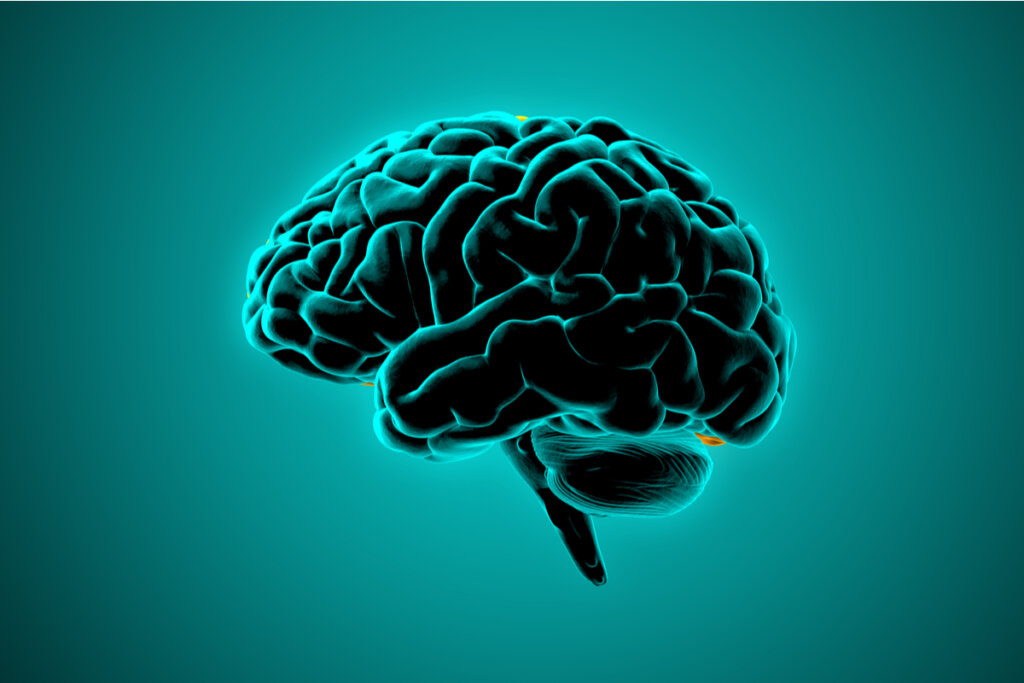There have been many characters in film, literature, and TV with the ability to insert thoughts into other people’s minds. Although this may seem like the kind of situation that only exists in fiction, the truth is that it’s not far from reality. Indeed, patients who suffer from thought insertion have similar experiences.
Can a person really have thoughts that aren’t their own? As yet, there’s no definitive answer to this question but this rare condition does raise issues such as the integration of the self, consciousness, and the context of the individual.
Thought insertion
This is a psychological condition of thought that produces in the sufferer the conviction that there are ideas in their mind that don’t belong to them. In other words, some external agent has inserted thoughts into their mind.
It’s a type of delusion that people with schizophrenia often experience. However, there’s an ongoing debate as to whether it’s just a belief or a more structured experience.
Thought insertion is a typical symptom of psychotic disorders in which the perception of reality is altered. It can be observed through what the patient says. In fact, they express that in their mind there are certain ideas that aren’t theirs. The agents that sufferers think have “implanted” the thoughts vary. They range from other people to alien beings. In some cases, the patient can’t identify where they come from.
Along the same lines, the content of the patient’s thoughts is also diverse. In most cases, the patient is strongly affected. As a matter of fact, sufferers of thought insertion may claim that these ideas could lead them to commit terrible acts. For this reason, they try to banish them from their mind. In addition, it’s possible that these inserted thoughts motivate different behaviors that may or may not be dangerous.
Delusions or other types of experiences?
Delusions are alterations that generate false beliefs and disturb the way reality is processed. Some examples are delusions of grandeur, erotomania, oneirism, etc.
Throughout history, thought insertion has been classified as a form of delusion typical of schizophrenia. However, controversy exists regarding its phenomenology that’s made its study difficult. In 2018 López-Silva conducted research that explains that researchers haven’t yet reached a consensus on the description of this alteration.
According to the author, the experience reported by patients suffering from thought insertion consists of two parts. On the one hand, there are the experiential changes that occur before the delusional episode. Then, there are the subjective characteristics of the delusional episode itself. López-Silva points out that the research works to date have tended to focus on the latter.
Consequently, the phenomenon can’t be properly addressed until its properties are clearly defined.
Causes of thought insertion
Despite the problems in relation to its description, there’s certain research that speculates, in a helpful way, about the causes of thought insertion. In one study, Martin and Pacherie (2013) associate it with the lack of integration of consciousness and inconsistent internal experiences of patients with schizophrenia.
Their hypothesis is that the lack of integration in consciousness also affects how contextual information is processed. Therefore, thought insertion would be a failure in the integration of the contextual information of a specific idea. In other words, the thought arises but isn’t organized with the rest of the patient’s thoughts. As a result, certain ideas are perceived as “alien.”
On the other hand, Walsh et al. (2015) conducted research regarding the phenomenon of alien control in people with schizophrenia. These are cases where those affected claim that their movements and ideas don’t come from themselves but from extraterrestrial creatures. The researchers analyzed the brains of these subjects with magnetic resonance imaging.
The results revealed that thought insertion was associated with low levels of activity in different neural networks. Among these were language, movement, and the perception of one’s own being. Low activation of the left supplemental motor area (SMA) was also observed. This caused problems in the connection of the SMA with the language and movement areas.

Is it possible to cure?
As mentioned before, thought insertion is related to schizophrenia. Therefore, intervention to address schizophrenia is the most appropriate to eliminate this disturbance of thought.
Intervention plans may include antipsychotic treatment to control hallucinations, delusions, and any other symptoms. It’s usually complemented with psychotherapy for the psychoeducation of the patient, as well as to treat possible cognitive distortions, among other symptoms.
As yet, there are no known treatments that are specific to alleviate the symptoms of thought insertion. Since its cause is believed to be schizophrenia, it wouldn’t be helpful to focus any efforts on eliminating the problem on its own.
In conclusion, this typical condition of psychotic disorders deserves more attention from the scientific community. It isn’t yet clear what its specific characteristics are. Furthermore, studies on its causes are similarly inconclusive.
Everything seems to indicate that thought insertion responds to difficulties in the integration of brain information. In this way, the “implanted” ideas would simply be the patient’s own thoughts that aren’t organized with the others.
The post Thought Insertion: Believing That Our Thoughts Don’t Belong to Us appeared first on Exploring your mind.

















Comments